
Explore new ways to celebrate 2022 Family Literacy Day.
- Subject:
- Early Childhood Development
- English Language Arts
- Material Type:
- Primary Source
- Author:
- Jessica Wall
- Date Added:
- 01/10/2022

Explore new ways to celebrate 2022 Family Literacy Day.

Students use washable paints, markers, and construction paper to illustrate a month from the traditional Cree Calendar
Students will be able to:
illustrate a month from the traditional Cree calendar;
demonstrate an understanding of the changes, cycles and patterns that occur in nature through words and images;
draw/paint geometric and organic shapes;
create the illusion of depth in space using size;
connect personal life experiences to their artworks.
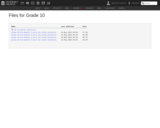
Making Evidence-Based Claims ELA/Literacy Units empower students with a critical reading and writing skill at the heart of the Common Core: making evidence-based claims about complex texts. These units are part of the Developing Core Proficiencies Program. This unit develops students' abilities to make evidence-based claims through activities based on a close reading of the Nobel Peace Prize Speeches of Rev. Dr. Martin Luther King, Jr. and President Barack Obama.

The goal of the Listening and Learning Strand is for students to acquire language competence through listening, specifically building a rich vocabulary, and broad knowledge in history and science by being exposed to carefully selected, sequenced, and coherent read-alouds. The 9 units (or domains) provide lessons (including images and texts), as well as instructional objectives, core vocabulary, and assessment materials. The domain topics include: Different Lands, Similar Stories; Fables and Stories; The Human Body; Early World Civilizations; Early American Civilizations; Astronomy; Animals & Habitats; Fairy Tales; and History of the Earth.
Find the rest of the EngageNY ELA resources at https://archive.org/details/engageny-ela-archive .

The Skills Strand teaches the mechanics of reading. Students are taught systematic and explicit phonics instruction as their primary tool for decoding written English. By the end of grade 2, students have learned all of the sound spelling correspondences in the English language and are able to decode written material they encounter. In addition to phonics, students also are taught spelling, grammar, and writing during the Skills Strand. A downloadable story "Kits Hats" with illustrations is provided for instruction.
Find the rest of the EngageNY ELA resources at https://archive.org/details/engageny-ela-archive .

The goal of the Listening and Learning Strand is for students to acquire language competence through listening, specifically building a rich vocabulary, and broad knowledge in history and science by being exposed to carefully selected, sequenced, and coherent read_alouds. The 9 units (or domains) provide lessons (including images and texts), as well as instructional objectives, core vocabulary, and assessment materials. The domain topics include: Nursery Rhymes and Fables; Five Senses; Stories; Plants; Farms; Kings and Queens; Seasons and Weather; Colonial Towns; and Taking Care of the Earth.
Find the rest of the EngageNY ELA resources at https://archive.org/details/engageny-ela-archive .

The Skills Strand teaches the mechanics of reading. Students are taught systematic and explicit phonics instruction as their primary tool for decoding written English. By the end of grade 2, students have learned all of the sound spelling correspondences in the English language and are able to decode written material they encounter. In addition to phonics, students also are taught spelling, grammar, and writing during the Skills Strand. A downloadable story "Kits Hats" with illustrations is provided for instruction.
Find the rest of the EngageNY ELA resources at https://archive.org/details/engageny-ela-archive .

Stan Muller teaches you a few things about copyright enforcement, and talks about the exceptions to copyright enforcement. While there are several, the one you've probably heard of is Fair Use, and it's a pretty tricky one. We'll try to explain it, and teach you just why fair use is so loosey goosey.
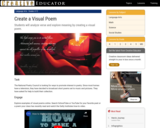
Students will analyze verse and explore meaning by creating a visual poem.

These rubric exemplars were developed to provide a consistent and common resource that aligns with the Saskatchewan curriculum and provide opportunities for transfer of responsibility between educator and student. These rubrics are designed to be edited by educator and student.
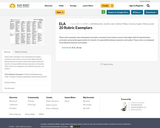
These rubric exemplars were developed to provide a consistent and common resource that aligns with the Saskatchewan curriculum and provide opportunities for transfer of responsibility between educator and student. These rubrics are designed to be edited by educator and student.
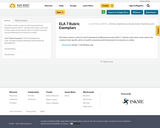
These 4 point rubric exemplars were developed to provide a consistent and common resource that aligns with the Saskatchewan curriculum and provide opportunities for transfer of responsibility between educator and student. These rubrics are designed to be edited by educator and student.
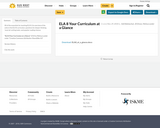
All of the essentials for teaching ELA 8.
An overview of the units in the ELA 8 curriculum, questions for deeper thinking, 'must do' writing tasks, and popular reading choices.
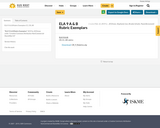
These 4 point rubrics were developed to provide a consistent and common resource that aligns with the Saskatchewan curriculum and provide opportunities for transfer of responsibility between educator and student. These rubrics are designed to be edited by educator and student.
ELA 9 A & B Rubric Exemplars can be used as is or adjusted to the classroom or individual student.
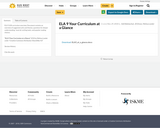
ELA 9 A/B curriculum overview.
Document contains an overview of suggested units and themes, questions for deeper understanding, 'must do' writing tasks, and popular reading choices.
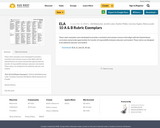
These 4 point rubric exemplars were developed to provide a consistent and common resource that aligns with the Saskatchewan curriculum and provide opportunities for transfer of responsibility between educator and student. These rubrics are designed to be edited by educator and student.
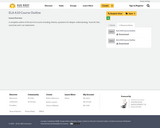
A complete outline of the ELA A10 course including: themes, questions for deeper understanding, 'must do' lists, outcomes and I can statements.
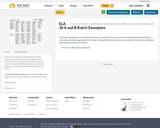
These rubric exemplars were developed to provide a consistent and common resource that aligns with the Saskatchewan curriculum and provide opportunities for transfer of responsibility between educator and student. These rubrics are designed to be edited by educator and student.
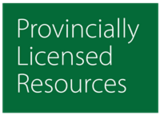
Encyclopedia Britannica Online is a fact-checked online encyclopedia with hundreds of thousands of objective articles, biographies, and videos. Students from Prekindergarten to Grade 12 can access age-appropriate, trustworthy content.

Harry Kindergarten video contrasting fiction and nonfiction in simple terms